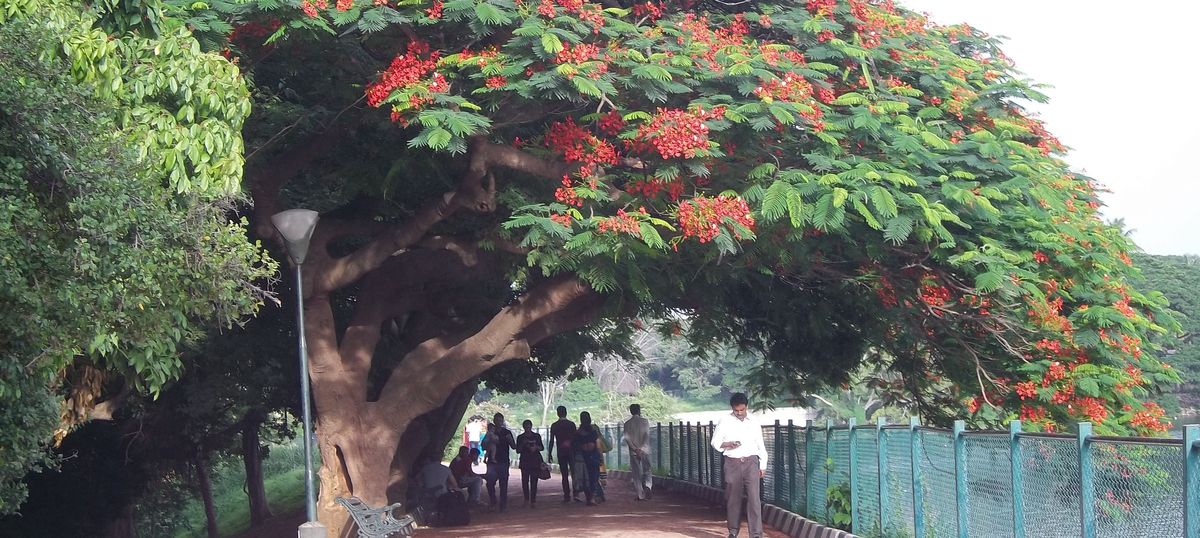"Do not be conformed to this world, but be transformed by the renewing of your mind...."
Saturday, June 17, 2017
Weep for the Garden City of my youth...
Read the entire article here: The dying of gulmohars heralds Bangalore's demise – and is a sign of urban India's forbidding future
"For every Bangalorean, there is now 0.1 tree, or a tenth of a tree. There should be 10 times that number if the city has to absorb the growing volumes of carbon dioxide from the 1,600 vehicles registered every day. "Since wide roads are being felled of trees across the city for road widening, this implies that Bangalore’s street tree population is being selectively denuded of its largest trees," wrote Harini Nagendra, a professor at the Azim Premji University, in this 2010 study. In the years since Nagendra's study, more than 50,000 trees have been lost, with only a few of the old gulmohars standing.
The dying of the gulmohars is a metaphor for unfolding urban disrepair and disarray. Its last rites were announced in 2014 when the city's chief conservator of forests declared there was no place for the gulmohar, the rain tree and other avenue trees that gave Bangalore its now-dead moniker of India's garden city. “The large trees with deep roots damage sewage lines, boundary walls, sumps and not to talk of traffic blocks caused by fallen branches [sic]," Brijesh Kumar, the official guardian of trees, told The Times of India. "The roads get choked and traffic blocked."
Kumar was right, except that despite thousands of trees cut, the roads are more choked than ever. The trees fall because they are constricted, imbalanced when their roots are hacked, or their branches are cut when builders add (often illegal) floors or when setbacks – the space between buildings and walls – are ignored. I have seen gulmohars being cut down simply to add a parking space or to stop the birds from dirtying cars.
Gulmohars, like rain trees, colonise the ground and air above them, making them particularly irksome to a city that has given itself the freedom to do as it pleases with a particular vengeance since it took on the mantle of India's second-fastest growing city in the 1990s (Delhi is the fastest, but that city's core has retained much of its greenery)."
If this article saddens you, you might like:
1. Simple steps you and I can take to protect our environment....
Subscribe to:
Post Comments (Atom)

No comments:
Post a Comment